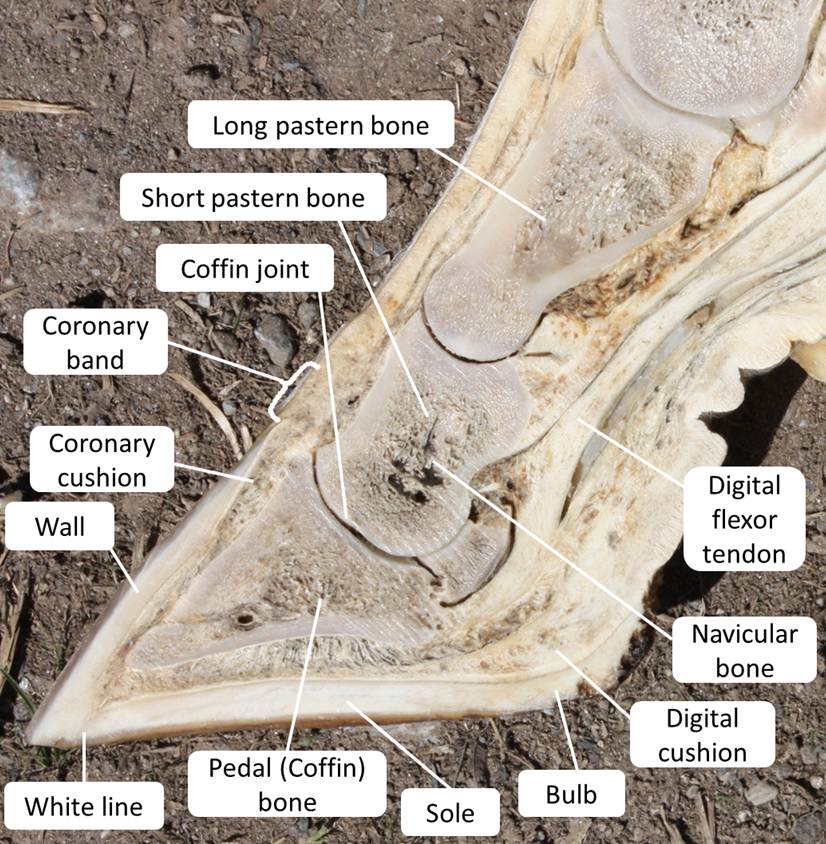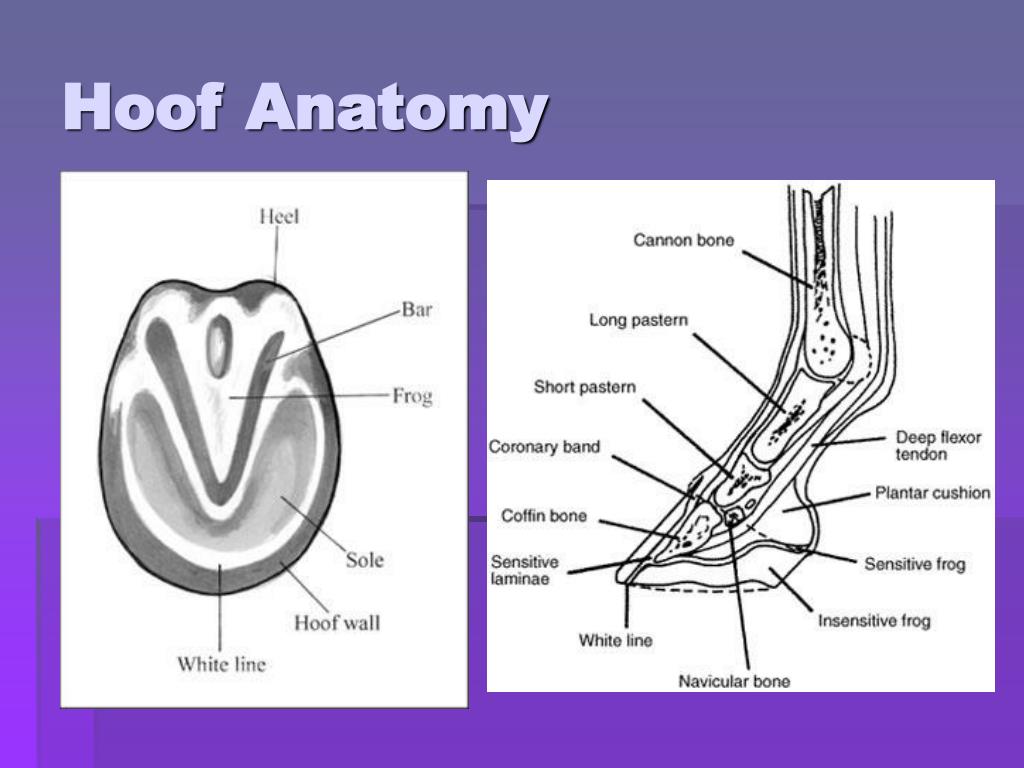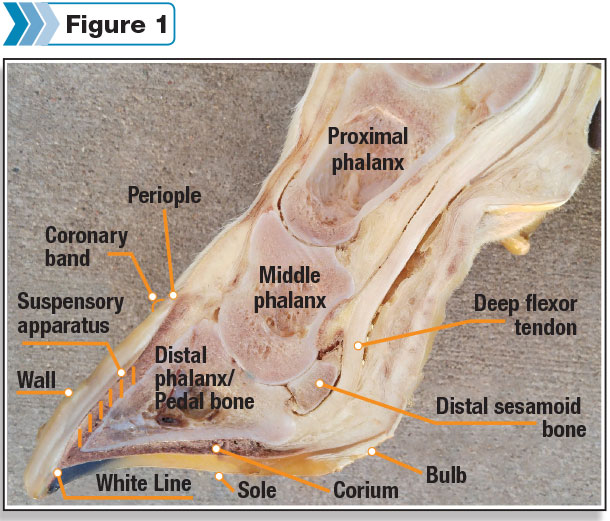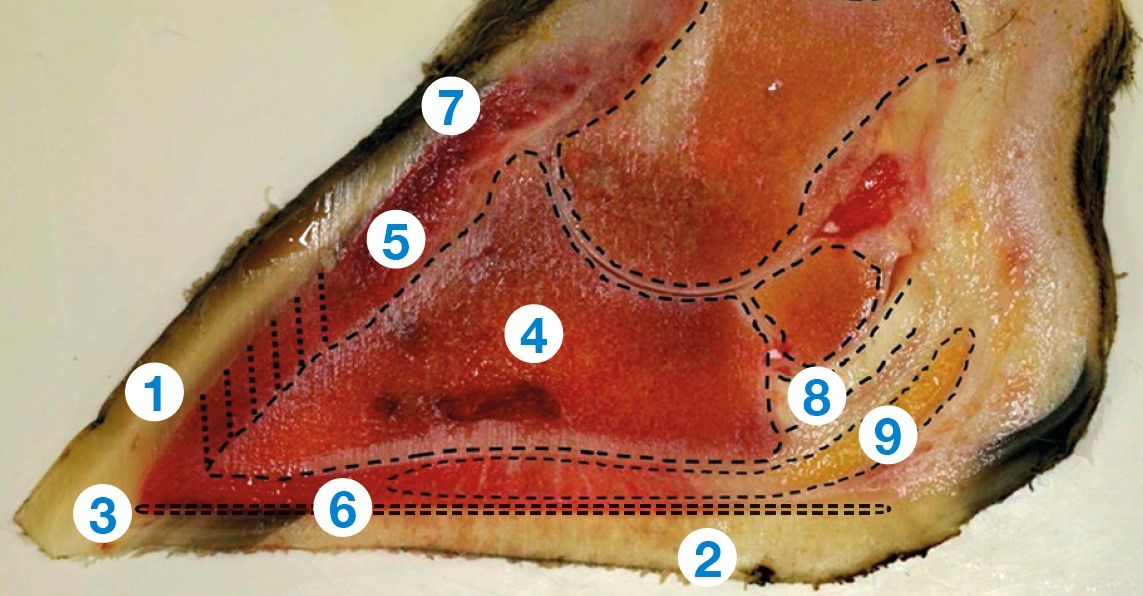
Cow Foot with Hoof Natural Specimen Anatomy Model, Articulated
The art of hoof trimming overgrown cow hooves is a meticulous process that requires attention to detail. By using the right tools, understanding the anatomy of the hoof, and maintaining a balanced trimming approach, you can ensure the cow's hoof health is optimized.

Awasome Cattle Hoof Cow Hoof Anatomy Ideas
Bovine Foot Anatomy Bones and joints While the cannon bone of a horse is MCIII or MTIII, in a cow it is a fused MCIII+IV or MTIII+IV. The fusion is present at the fetlock joint and above. Cattle do have the same bones and joints as horses below the fetlock but in duplicate form.

The Dancing Donkey More alike than different
Imaging Anatomy: Bovine Hindlimb Hoof Example 1 The following radiographs are the dorsoplantar, dorsolateral-plantaromedial oblique (DLPMO) and dorsomedial-plantarolateral oblique (DMPLO) views of the left rear foot of a nine-year-old Hereford cow. Click the radiograph image. Interactive image will open in a secondary window.

Cow Foot with Hoof Natural Specimen Anatomy Model, Articulated
The horse's hoof is a miracle of engineering. It contains a whole host of structures which, when healthy, operate in equilibrium with each other to form a hoof capsule which is able to withstand huge forces, utilising energy to assist with forward movement while providing protection to the sensitive structures beneath.

Cow Hoof Anatomy Model (2 part) 42010210 Anatomystuff
Vic's Hoof Trimming Course | Teach Anatomy Of Cattle Feet Legs. Vic's Hoof. About Us. +1 (519) 274-0878. (519) 679-6711.

Anatomy of the hoof Animal Science, Bone Horn, Hooves, Fed, Cattle
A cow has many different parts, including the head, neck, legs, hooves, and tail. The head of a cow contains the mouth, nose, eyes, ears, and horns. The neck connects the head to the body and is a vital part of the cow's anatomy. The legs and hooves are important for the cow's movement and balance. The tail is used for swatting flies and.

Farm Health Online Animal Health and Welfare Knowledge Hub Lameness
The hoof consists of two parts. The broad, hard, upper portion is called the unguis; it completely surrounds the end of the toe, extending down and forming a rim around the bottom of the hoof. A somewhat softer plate, called the subunguis, covers the bottom of the toe and is extensively developed in hoofed animals to form a tough pad. (In humans the subunguis is only a small ridge under the.

cow hoof anatomy
The cow hoof anatomy is a cornified modification of the epidermis that lies under the vascular layer and covers the end of the digits. You will find two primary and two accessory hooves on each limb of a cow. The leading hoof of a cow comprises three parts - periople, wall, and sole.

Wave goodbye to pain Foot Anatomy and Biomechanics
Anatomy of a bovine hoof Cattle are cloven-footed animals and the hoof consists of two digits. The claws are named by their relative location on the foot. There is the outer, or lateral claw, and the inner, or medial claw. The space between the two claws is called the interdigital clef; the area of skin is called the interdigital skin.

SheepHoofAnatomy.jpg (800×562) Hooves, Sheep, Goat feet
The distal interphalangeal joint (or DIP joint) is the articulation between the middle and distal phalanges. The ventral aspect of the distal phalanx has the flexor tuberosity, where the deep flexor tendon attaches. Continuous pressure by the flexor tuberosity to the corium may result in hemorrhage and ulceration.

PPT Chapter 4 PowerPoint Presentation, free download ID1114478
Management oxshoe is being nailed on the hooves of a bull used for Chinawal, India, to prevent them from wearing out too much. Hooves grow continuously. In nature, wild animals are capable of wearing down the hoof as it continuously grows, but captive domesticated species often must undergo specific hoof care for a healthy, functional hoof.

The Anatomy of the Hoof Hoofcount
The anatomy of a healthy cow's foot Knowledge about cattle foot anatomy may help to understand why lameness occurs. Back to: Lesions of cows' feet It is essential to be able to recognise the different parts of the horn, particularly when foot trimming .

Bovine Hoof Anatomy
The hoof is defined from a physiologic perspective as the modified skin (epidermis) covering the tip of the digit and all enclosed structures. The hoof provides protection to the distal limb and is formed by keratinisation of the epithelial layer and modification of the underlying dermis.

Be proactive to prevent lameness during the dry period Progressive
Knowing and understanding the anatomy of a cows hoof is absolutely essential in fully being able to take care of their hoof care - here I direct a hoof or di.

What does a healthy cow's foot look like? AHDB
The distal end of the cannon bone bears a condyle, with an extensive cylindrical articular surface, and a prominent sagittal ridge that articulates with a complementary sagittal groove of the proximal phalanx (P1). (see Fig. 7 image below of fracture related to these sagittal structures)

DISTAL LIMB SURGERIES AND HOOF TRIMMING
A healthy adult horse grows new hoof at the rate of between 1/4 to 1/2 inch per month. This means a horse will regrow its entire hoof wall over the course of about a year. Bovine hooves grow a bit slower, at a rate of approximately 2 inches a year. But, then again, a cow's hoof isn't as tall as a horse's hoof.